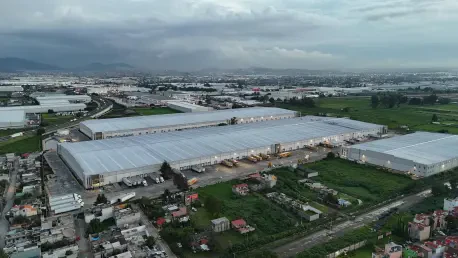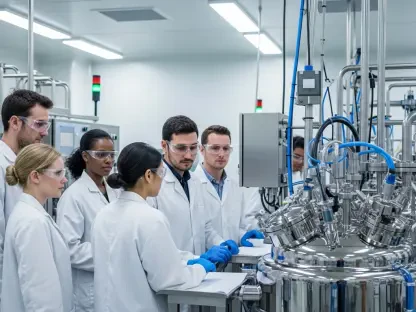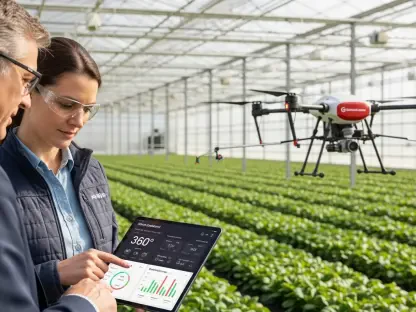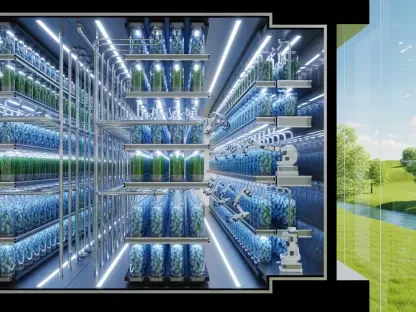In a world increasingly driven by the urgent need to combat climate change, a transformative shift is reshaping global supply chains, pushing industries to prioritize sustainability over traditional cost-cutting measures. This emerging trend, dubbed “powershoring,” redefines industrial relocation by focusing on regions that offer clean, reliable energy to support manufacturing and logistics. Unlike past strategies such as offshoring or nearshoring, which hinged on labor costs and geographic proximity, powershoring places environmental resilience at the forefront. Mexico, with its strategic location and renewable energy potential, stands poised to become a leader in this new era. As multinational corporations race to meet net-zero goals, the pressure is on for nations to adapt, and Mexico’s unique position could turn it into a pivotal hub for sustainable industry in North America, provided it seizes the moment with deliberate action.
The Rise of a Sustainable Industrial Model
Redefining Global Competitiveness
The concept of powershoring marks a significant departure from conventional industrial strategies, driven by the stark reality that energy accounts for nearly three-quarters of global greenhouse gas emissions, according to data from the International Energy Agency. Companies worldwide are now under immense pressure to align with environmental, social, and governance (ESG) standards, shifting their focus from minimizing labor expenses to achieving the lowest possible carbon footprint. This pivot is not merely a trend but a necessity, as stakeholders demand transparency and accountability in corporate operations. Powershoring, therefore, emerges as a critical framework, compelling industries to relocate to areas where sustainable energy can power their growth. For many, this means reevaluating long-standing supply chain models to prioritize regions that offer both economic viability and ecological responsibility, setting a new benchmark for what it means to be competitive on a global stage.
Energy as the New Industrial Advantage
Beyond the moral imperative of sustainability, energy innovation is becoming the cornerstone of industrial advantage, outpacing traditional factors like cheap labor or abundant land. Nations such as Portugal and South Korea illustrate this shift, with the former transforming its ports into green-energy trade hubs and the latter embedding renewables into smart manufacturing clusters. These examples highlight a broader movement where access to clean power directly correlates with economic strength. For regions aiming to attract investment, the ability to provide reliable, sustainable energy infrastructure is now a key differentiator. This trend underscores a fundamental change in how industrial success is measured, pushing countries to invest in renewable sources and modern grids to stay relevant. As global supply chains realign, the focus on energy-driven competitiveness reveals a landscape where environmental and economic goals are increasingly intertwined, challenging nations to adapt swiftly or risk being left behind.
Mexico’s Strategic Position in the Green Logistics Era
Leveraging Geographic and Energy Strengths
Mexico stands at a unique crossroads in the powershoring movement, blessed with both proximity to the vast US consumer market and a burgeoning potential for renewable energy. Already, over 30% of the country’s electricity is derived from sustainable sources, bolstered by diverse geographic advantages such as solar-rich northern regions, windy southern corridors, and access to hydropower and geothermal resources. Industrial centers like Bajío, Monterrey, and Tijuana are witnessing unprecedented growth, with occupancy rates surpassing 97% due to nearshoring momentum. Yet, the opportunity extends beyond mere manufacturing capacity. By prioritizing clean energy investments, Mexico could position itself as the clean-energy gateway of North America, transforming from a low-cost production base into a hub of sustainable innovation. This shift demands strategic planning to harness these natural assets, ensuring that energy infrastructure keeps pace with industrial demand while meeting global sustainability benchmarks.
Building a Framework for Sustainable Growth
To capitalize on its advantages, Mexico must act decisively to build a robust framework that supports green logistics and manufacturing. Accelerating investments in renewable energy and transmission infrastructure is paramount, alongside fostering public-private partnerships to create dedicated green manufacturing belts. Clear regulatory policies are also essential to attract long-term capital in energy and logistics sectors. Such initiatives could potentially boost annual GDP growth by as much as 1.5% and generate thousands of high-skilled jobs in areas like energy engineering and sustainable production. However, the window for action is narrowing as global competitors advance their own green agendas. The challenge lies in balancing immediate economic needs with long-term environmental goals, ensuring that policies not only attract investment but also embed sustainability into the core of industrial expansion. Mexico’s ability to integrate these elements will determine whether it can lead in this new era of powershoring.
Charting the Path Forward
Lessons from the Past, Vision for Tomorrow
Reflecting on the journey so far, the discourse around powershoring reveals a profound shift in how global supply chains are reimagined to prioritize sustainability over mere cost efficiency. Mexico’s potential as a leader in this space becomes evident through its geographic and energy advantages, which are meticulously analyzed as key drivers of industrial growth. The urgency to act is underscored by comparisons with nations that have already embedded green energy into their economic frameworks, setting a precedent for what is possible. Discussions around strategic investments and regulatory clarity paint a picture of a nation at a pivotal moment, where past hesitations need to give way to bold, forward-thinking policies. The narrative that unfolds is one of opportunity tempered by the recognition that success is not assured without deliberate effort.
Steps to Secure a Sustainable Legacy
Looking ahead, the focus must shift to actionable strategies that solidify Mexico’s role as a clean-energy industrial hub. Prioritizing rapid deployment of renewable projects and modernizing energy grids should top the agenda, alongside incentivizing innovation in green logistics. Collaboration between government and private sectors will be crucial to fund and execute these initiatives effectively. Additionally, establishing clear benchmarks for ESG compliance can position Mexico as a trusted partner for multinational firms seeking sustainable operations. Exploring international partnerships to share technology and expertise could further accelerate progress. As the global race for powershoring leadership intensifies, these steps offer a roadmap to not only meet current demands but also anticipate future challenges, ensuring that Mexico’s legacy in sustainable industry is both impactful and enduring.









